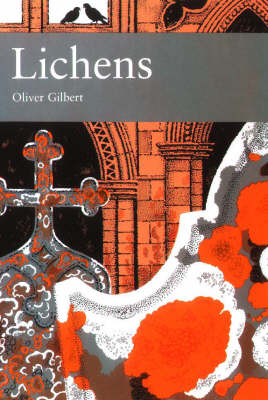
Lichens
Seiten
2000
Collins (Verlag)
978-0-00-220081-3 (ISBN)
Collins (Verlag)
978-0-00-220081-3 (ISBN)
- Titel erscheint in neuer Auflage
- Artikel merken
Zu diesem Artikel existiert eine Nachauflage
Starting with a look at how lichens have been used throughout history in medicines, dyes, food and perfumes, this study then goes on to describe what lichens are, and how they grow and reproduce; their habitats, and how they can be used to detect environmental pollution.
Lichens are fascinating and beautiful organisms able to colonise a vast range of habitats, including seemingly impossible places such as bare icy mountain tops and sun-scorched coastal rocks. This book discusses all aspects of British lichens, revealing the secrets of their success. The book begins by looking at how lichens have been used throughout history in medicines, dyes, food and perfumes. It then goes on to describe what lichens are, and how they grow and reproduce. A detailed survey is given of the range of habitats in which lichens can be found: on trees, rocks, heaths and moors, chalk and limestone, mountains, rivers, lakes, the coast, walls and buildings, most famously on churches and in churchyards. Gilbert also discusses the susceptibility of lichens to air pollution, and how they can be used to detect environmental pollution. The comprehensive, reader-friendly text, over 150 illustrations and 16 pages of colour, combine to make Lichens the definitive work on this subject of great natural history interest.
Lichens are fascinating and beautiful organisms able to colonise a vast range of habitats, including seemingly impossible places such as bare icy mountain tops and sun-scorched coastal rocks. This book discusses all aspects of British lichens, revealing the secrets of their success. The book begins by looking at how lichens have been used throughout history in medicines, dyes, food and perfumes. It then goes on to describe what lichens are, and how they grow and reproduce. A detailed survey is given of the range of habitats in which lichens can be found: on trees, rocks, heaths and moors, chalk and limestone, mountains, rivers, lakes, the coast, walls and buildings, most famously on churches and in churchyards. Gilbert also discusses the susceptibility of lichens to air pollution, and how they can be used to detect environmental pollution. The comprehensive, reader-friendly text, over 150 illustrations and 16 pages of colour, combine to make Lichens the definitive work on this subject of great natural history interest.
Currently a Reader in the Department of Landscape Architecture at Sheffield University, Oliver Gilbert has almost 30 years of teaching and research experience within universities. He first became aware of lichens whilst working as a botanist at Malham Tarn Field Centre. This led him to complete a PhD in the subject of lichens and air pollution. He has a special interest in applied and urban ecology, and is the author of numerous research papers and books. He was elected an honorary member of the British Lichen Society in 1996.
| Erscheint lt. Verlag | 6.3.2000 |
|---|---|
| Reihe/Serie | Collins New Naturalist ; 86 |
| Zusatzinfo | 150 b/w illus, 64 col plates (16pp), With index |
| Verlagsort | London |
| Sprache | englisch |
| Maße | 155 x 222 mm |
| Gewicht | 792 g |
| Themenwelt | Naturwissenschaften ► Biologie ► Botanik |
| Naturwissenschaften ► Biologie ► Limnologie / Meeresbiologie | |
| ISBN-10 | 0-00-220081-3 / 0002200813 |
| ISBN-13 | 978-0-00-220081-3 / 9780002200813 |
| Zustand | Neuware |
| Haben Sie eine Frage zum Produkt? |
Mehr entdecken
aus dem Bereich
aus dem Bereich
Gefäßpflanzen: Grundband
Buch | Hardcover (2021)
Springer Spektrum (Verlag)
CHF 62,95
ein Baum erzählt seine erstaunliche Geschichte
Buch | Hardcover (2024)
Ludwig (Verlag)
CHF 32,15



